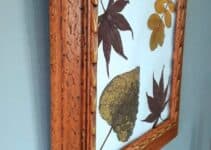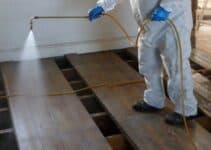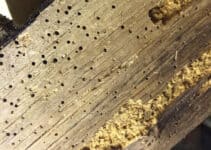With the right conditions, woodworm can make a meal out of practically any exposed timber in your home. Floorboards are no exception. In some extreme instances, extensive woodworm damage can result in floorboards becoming unsound or even breaking underfoot.
The good news is that, particularly with smaller infestations, there are plenty of over-the-counter products you can use to try to remedy the problem yourself.
Most of these contain either permethrin or boron and will usually involve you spraying or brushing a liquid over the affected area. With proper protective equipment, there are many instances where this can be a DIY job.
You may not need to do anything at all. Whether or not you’ll need to treat a woodworm infestation in your floorboards, and how, will likely depend on whether it’s active, the scale of the infestation, and the extent of any damage.
For larger areas, you may want to seek the opinion of a professional company specialising in timber maintenance and pest removal.
A reputable firm should be able to give you an honest appraisal of any damage caused and whether or not professional treatment is necessary, including any costs you might incur.
But lets look into more detail on How to treat woodworm in floorboards.
How do you know if woodworm is active in floorboards?
Before rushing to your nearest DIY store, or panicking about whether or not a professional woodworm treatment will cost you this month’s wages, it’s worth trying to establish whether you have an active woodworm infestation in your floorboards.
Exit holes, the small round holes left by wood boring beetles leaving the wood after they have passed the larvae stage, are not necessarily the marks of an active infestation. If new holes are not appearing and there are no other signs, these may indicate an old infestation.
The appearance of frass, the dusty, wood shaving-like deposit left by boring beetles near to exit holes, is often a more useful indicator as to whether an infestation is active. If you’re noticing the appearance of new frass piles, this almost certainly indicates an active infestation.
Similarly, the appearance of new exit holes is often a strong indicator of an active infestation. If you’re not sure whether new holes are appearing, and there are only a few holes in your floorboards, try marking existing holes with a pencil.
This will then allow you to take note as to whether any new, unfamiliar holes appear over subsequent months.
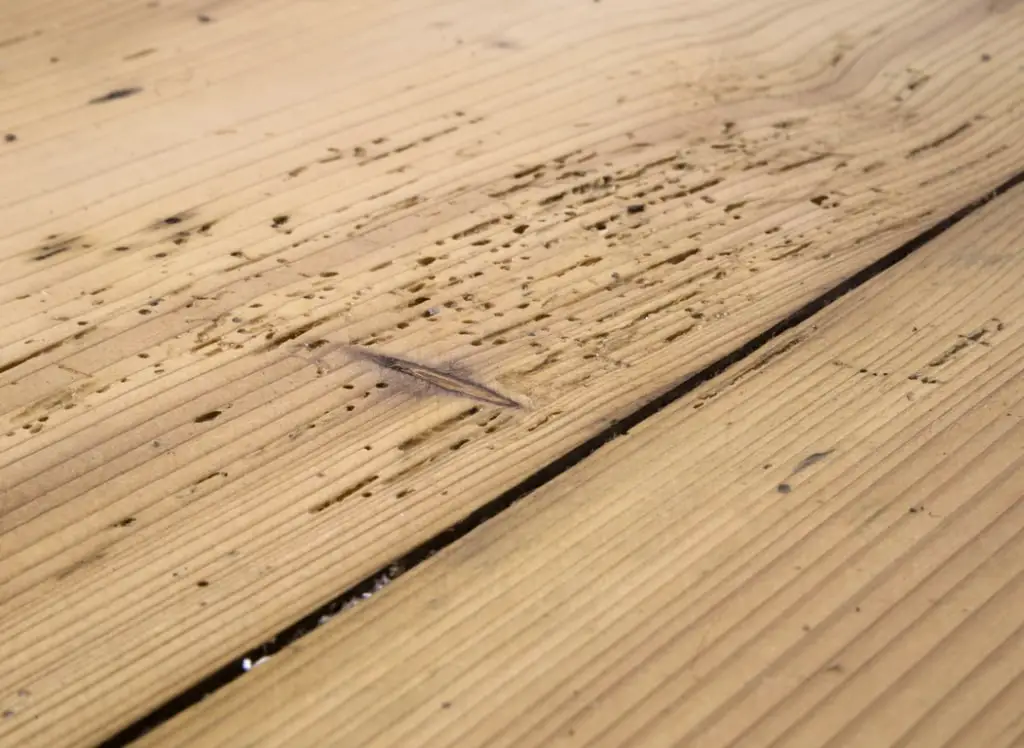
From high spring through summer, you might even see new adult beetles emerging from the timber, though this is not guaranteed even with an active infestation.
Burrowing larvae are less likely to be spotted. Not only are they very small, but they tend to be beneath the surface of the wood and out of sight.
Eggs newly laid by adult beetles on the surface of the wood are even smaller and practically impossible to spot with the naked eye.
Found woodworm in floorboards – should I panic?
The good news is that many woodworm infestations are unlikely to cause serious structural damage to your floor, even though the holes they leave can be unsightly.
In extreme cases, if woodworm larvae have truly riddled floorboards with tunnels, you may find that floorboards need replacing. If they sound hollow when tapped with a hammer, this is usually a bad sign.
That being said, if an infestation is no longer active, or if you are able to treat an active infestation before it gets out of hand, you stand a good chance of being able to save your floorboards before it’s too late.
That’s largely because the type of woodworm likely to nestle into floorboards is the common furniture beetle.
Though an infestation of these hungry larvae is far from perfect, the actual tunnels and holes they leave are comparatively slight compared to the far more damaging longhorn beetle or death watch beetle.
These latter species are often more liable to cause structural damage due to their longer life cycles and the sizeable, deep tunnels they bore.
Fortunately for your floorboards, the more destructive species of woodworm are less likely to target them.
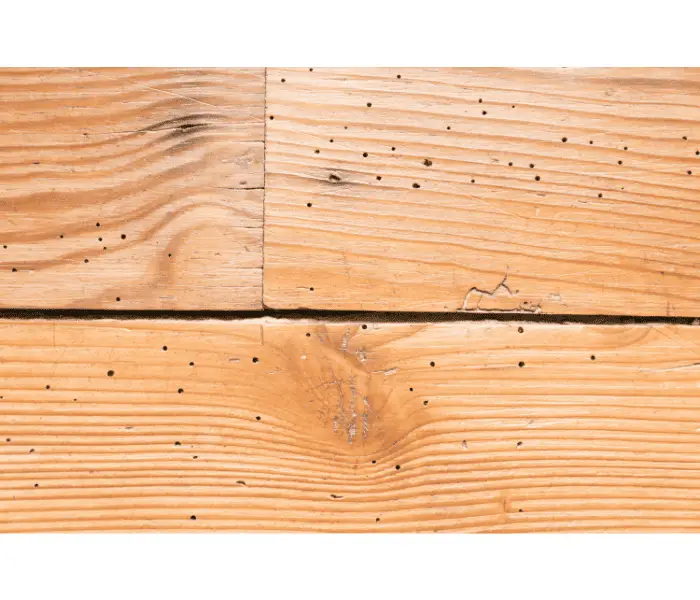
Can I treat woodworm in floorboards myself?
If you think that an active infestation is still relatively small, it’s feasible to try treating it yourself. This will likely prove much cheaper in the first instance than opting for a professional intervention, though DIY-ers may struggle ensuring the job they do is as thorough or as comprehensive as experienced professionals.
Boron and permethrin are often substances found in over-the-counter woodworm treatments. Both usually involve applying a liquid solution to the affected wood via spray or brush.
Permethrin is a toxic insecticide that will kill all insects it touches. It’s nasty stuff and should be kept away from children and pets, not to mention your own skin and clothing.
You’ll need proper protective equipment and should read the instructions as to how long an area will need leaving for after you’ve applied the solution.
Boron based wood treatments are often seen as a gentler, more natural option, though will still require safety precautions.
Boron can be chosen as a protective treatment for timber due to a range of other benefits, including guarding against fungal decay and dry rot.
Remember, you will likely need to remove the affected floorboards in order to apply solution to the underside, as well as to fully assess the damage.
It may also be a good idea to treat any exposed timber near the affected area, including any floorboards that might appear to have escaped woodworm thus far.
If you think that a woodworm infestation is too extensive for you to tackle yourself, or if you want a professional appraisal of the situation, you may wish to opt for a professional pest removal firm.
In the UK, going with a company registered with the Property Care Association can help ensure they have the right certifications and experience.
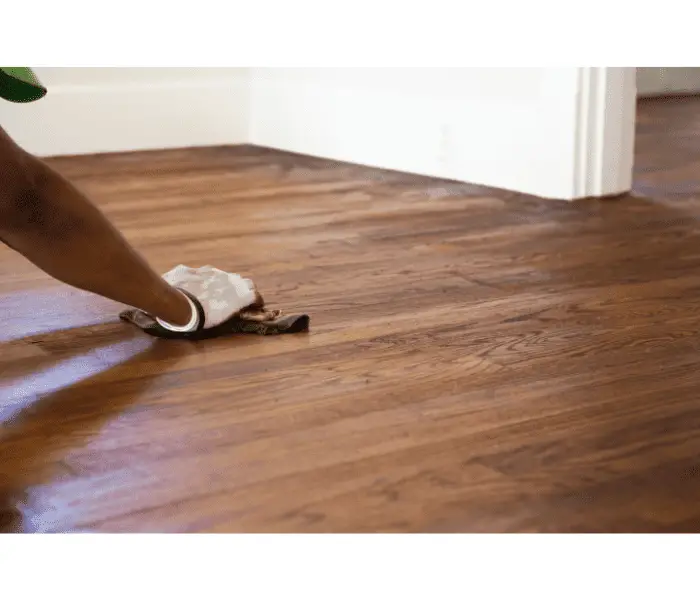
Can laminate flooring get woodworm?
Although laminate flooring contains wood components, it’s unlikely to be targeted by woodworm for a couple of reasons.
Firstly, the high or medium density fibreboard that makes up the core of laminate flooring is usually made from wood fibres glued and pressed together along with a range of chemicals.
These chemicals will often prove fatal to burrowing larvae, even if they were to emerge from eggs laid on the wood in the first place.
Secondly, the protective outer coating on laminate flooring will, assuming it’s intact, usually prove sufficient to prevent eggs from being laid in the first place.
Wood boring beetles are far more likely to opt for exposed, rough-edged timber with a relatively high moisture content.
Assuming your laminate flooring is kept dry and the protective coating is in place, it’s unlikely that it will be affected or damaged by woodworm.
Final thoughts
Woodworm in your floorboards can be a worrying prospect, but don’t panic. First, try to establish whether an active infestation is present.
If it is, chances are the common furniture beetle is the culprit. In such instances, DIY treatments can be sufficient to prevent further damage.
Make sure you check the label, wear proper protective equipment, and keep any treated areas clear of people and pets for as long as is required.
Serious, structural damage is only likely to be caused in cases where repeated or severe infestations have been left to wreak havoc on the wood.
In most instances, woodworm can leave unsightly holes but will not necessarily result in your floorboards collapsing.
If you are in any doubt about the structural integrity of your floor, seek the advice of a licensed surveyor or building professional to gauge the extent of the damage and determine whether or not timbers need replacing.
